Christian Wilms
SOS: Segment Object System for Open-World Instance Segmentation With Object Priors
Sep 22, 2024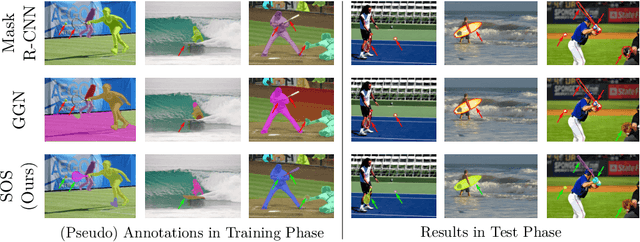

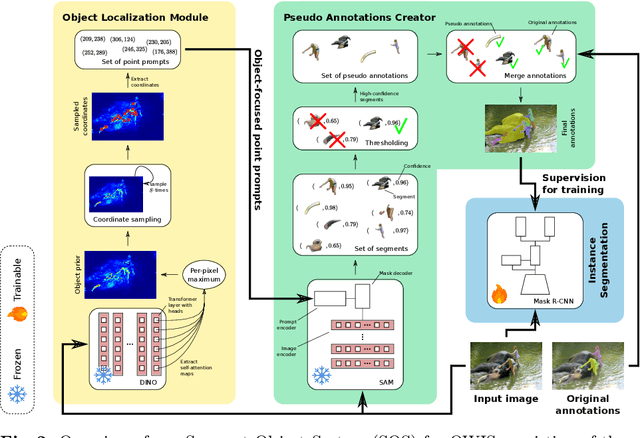

Abstract:We propose an approach for Open-World Instance Segmentation (OWIS), a task that aims to segment arbitrary unknown objects in images by generalizing from a limited set of annotated object classes during training. Our Segment Object System (SOS) explicitly addresses the generalization ability and the low precision of state-of-the-art systems, which often generate background detections. To this end, we generate high-quality pseudo annotations based on the foundation model SAM. We thoroughly study various object priors to generate prompts for SAM, explicitly focusing the foundation model on objects. The strongest object priors were obtained by self-attention maps from self-supervised Vision Transformers, which we utilize for prompting SAM. Finally, the post-processed segments from SAM are used as pseudo annotations to train a standard instance segmentation system. Our approach shows strong generalization capabilities on COCO, LVIS, and ADE20k datasets and improves on the precision by up to 81.6% compared to the state-of-the-art. Source code is available at: https://github.com/chwilms/SOS
AnomalousPatchCore: Exploring the Use of Anomalous Samples in Industrial Anomaly Detection
Aug 27, 2024


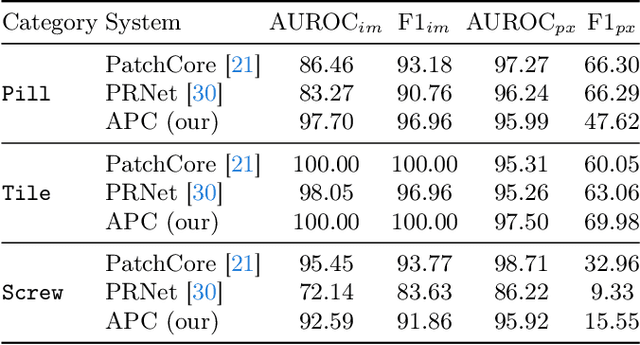
Abstract:Visual inspection, or industrial anomaly detection, is one of the most common quality control types in manufacturing. The task is to identify the presence of an anomaly given an image, e.g., a missing component on an image of a circuit board, for subsequent manual inspection. While industrial anomaly detection has seen a surge in recent years, most anomaly detection methods still utilize knowledge only from normal samples, failing to leverage the information from the frequently available anomalous samples. Additionally, they heavily rely on very general feature extractors pre-trained on common image classification datasets. In this paper, we address these shortcomings and propose the new anomaly detection system AnomalousPatchCore~(APC) based on a feature extractor fine-tuned with normal and anomalous in-domain samples and a subsequent memory bank for identifying unusual features. To fine-tune the feature extractor in APC, we propose three auxiliary tasks that address the different aspects of anomaly detection~(classification vs. localization) and mitigate the effect of the imbalance between normal and anomalous samples. Our extensive evaluation on the MVTec dataset shows that APC outperforms state-of-the-art systems in detecting anomalies, which is especially important in industrial anomaly detection given the subsequent manual inspection. In detailed ablation studies, we further investigate the properties of our APC.
Select High-Level Features: Efficient Experts from a Hierarchical Classification Network
Mar 08, 2024Abstract:This study introduces a novel expert generation method that dynamically reduces task and computational complexity without compromising predictive performance. It is based on a new hierarchical classification network topology that combines sequential processing of generic low-level features with parallelism and nesting of high-level features. This structure allows for the innovative extraction technique: the ability to select only high-level features of task-relevant categories. In certain cases, it is possible to skip almost all unneeded high-level features, which can significantly reduce the inference cost and is highly beneficial in resource-constrained conditions. We believe this method paves the way for future network designs that are lightweight and adaptable, making them suitable for a wide range of applications, from compact edge devices to large-scale clouds. In terms of dynamic inference our methodology can achieve an exclusion of up to 88.7\,\% of parameters and 73.4\,\% fewer giga-multiply accumulate (GMAC) operations, analysis against comparative baselines showing an average reduction of 47.6\,\% in parameters and 5.8\,\% in GMACs across the cases we evaluated.
S$^3$AD: Semi-supervised Small Apple Detection in Orchard Environments
Nov 08, 2023



Abstract:Crop detection is integral for precision agriculture applications such as automated yield estimation or fruit picking. However, crop detection, e.g., apple detection in orchard environments remains challenging due to a lack of large-scale datasets and the small relative size of the crops in the image. In this work, we address these challenges by reformulating the apple detection task in a semi-supervised manner. To this end, we provide the large, high-resolution dataset MAD comprising 105 labeled images with 14,667 annotated apple instances and 4,440 unlabeled images. Utilizing this dataset, we also propose a novel Semi-Supervised Small Apple Detection system S$^3$AD based on contextual attention and selective tiling to improve the challenging detection of small apples, while limiting the computational overhead. We conduct an extensive evaluation on MAD and the MSU dataset, showing that S$^3$AD substantially outperforms strong fully-supervised baselines, including several small object detection systems, by up to $14.9\%$. Additionally, we exploit the detailed annotations of our dataset w.r.t. apple properties to analyze the influence of relative size or level of occlusion on the results of various systems, quantifying current challenges.
High-Level Features Parallelization for Inference Cost Reduction Through Selective Attention
Aug 09, 2023



Abstract:In this work, we parallelize high-level features in deep networks to selectively skip or select class-specific features to reduce inference costs. This challenges most deep learning methods due to their limited ability to efficiently and effectively focus on selected class-specific features without retraining. We propose a serial-parallel hybrid architecture with serial generic low-level features and parallel high-level features. This accounts for the fact that many high-level features are class-specific rather than generic, and has connections to recent neuroscientific findings that observe spatially and contextually separated neural activations in the human brain. Our approach provides the unique functionality of cutouts: selecting parts of the network to focus on only relevant subsets of classes without requiring retraining. High performance is maintained, but the cost of inference can be significantly reduced. In some of our examples, up to $75\,\%$ of parameters are skipped and $35\,\%$ fewer GMACs (Giga multiply-accumulate) operations are used as the approach adapts to a change in task complexity. This is important for mobile, industrial, and robotic applications where reducing the number of parameters, the computational complexity, and thus the power consumption can be paramount. Another unique functionality is that it allows processing to be directly influenced by enhancing or inhibiting high-level class-specific features, similar to the mechanism of selective attention in the human brain. This can be relevant for cross-modal applications, the use of semantic prior knowledge, and/or context-aware processing.
Small, but important: Traffic light proposals for detecting small traffic lights and beyond
Jul 27, 2023



Abstract:Traffic light detection is a challenging problem in the context of self-driving cars and driver assistance systems. While most existing systems produce good results on large traffic lights, detecting small and tiny ones is often overlooked. A key problem here is the inherent downsampling in CNNs, leading to low-resolution features for detection. To mitigate this problem, we propose a new traffic light detection system, comprising a novel traffic light proposal generator that utilizes findings from general object proposal generation, fine-grained multi-scale features, and attention for efficient processing. Moreover, we design a new detection head for classifying and refining our proposals. We evaluate our system on three challenging, publicly available datasets and compare it against six methods. The results show substantial improvements of at least $12.6\%$ on small and tiny traffic lights, as well as strong results across all sizes of traffic lights.
Segmenting Medical Instruments in Minimally Invasive Surgeries using AttentionMask
Mar 21, 2022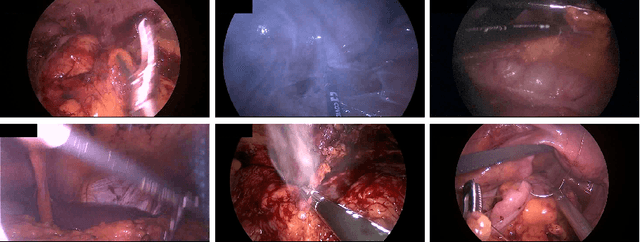
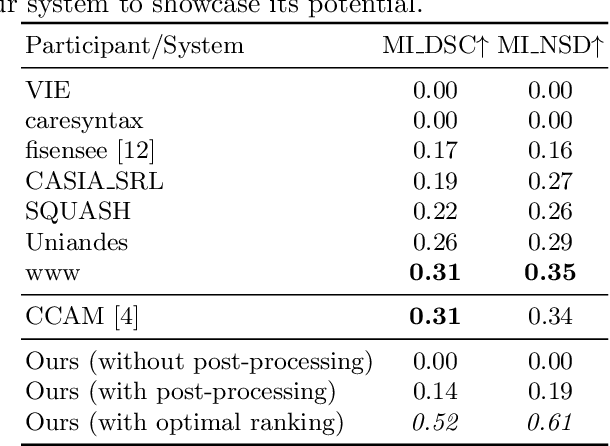

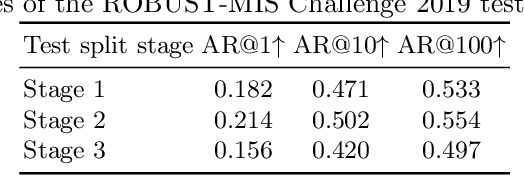
Abstract:Precisely locating and segmenting medical instruments in images of minimally invasive surgeries, medical instrument segmentation, is an essential first step for several tasks in medical image processing. However, image degradations, small instruments, and the generalization between different surgery types make medical instrument segmentation challenging. To cope with these challenges, we adapt the object proposal generation system AttentionMask and propose a dedicated post-processing to select promising proposals. The results on the ROBUST-MIS Challenge 2019 show that our adapted AttentionMask system is a strong foundation for generating state-of-the-art performance. Our evaluation in an object proposal generation framework shows that our adapted AttentionMask system is robust to image degradations, generalizes well to unseen types of surgeries, and copes well with small instruments.
Localizing Small Apples in Complex Apple Orchard Environments
Feb 23, 2022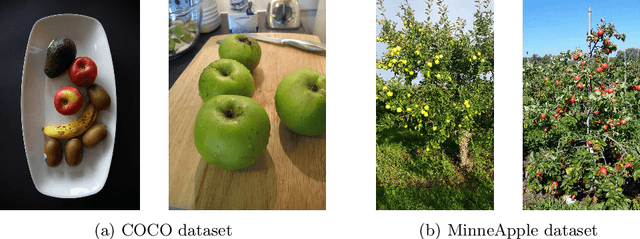



Abstract:The localization of fruits is an essential first step in automated agricultural pipelines for yield estimation or fruit picking. One example of this is the localization of apples in images of entire apple trees. Since the apples are very small objects in such scenarios, we tackle this problem by adapting the object proposal generation system AttentionMask that focuses on small objects. We adapt AttentionMask by either adding a new module for very small apples or integrating it into a tiling framework. Both approaches clearly outperform standard object proposal generation systems on the MinneApple dataset covering complex apple orchard environments. Our evaluation further analyses the improvement w.r.t. the apple sizes and shows the different characteristics of our two approaches.
DeepFH Segmentations for Superpixel-based Object Proposal Refinement
Aug 07, 2021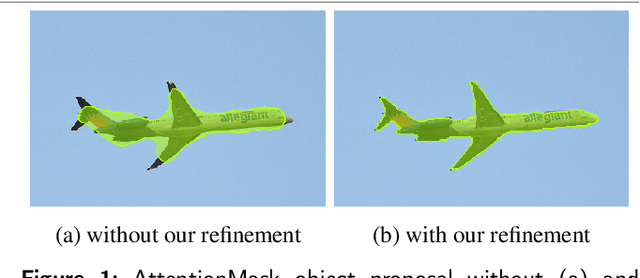
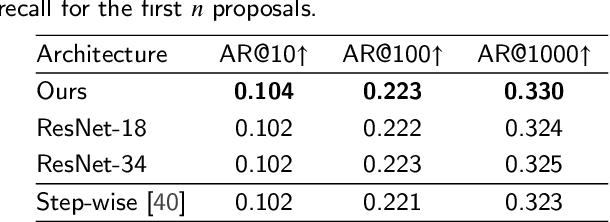
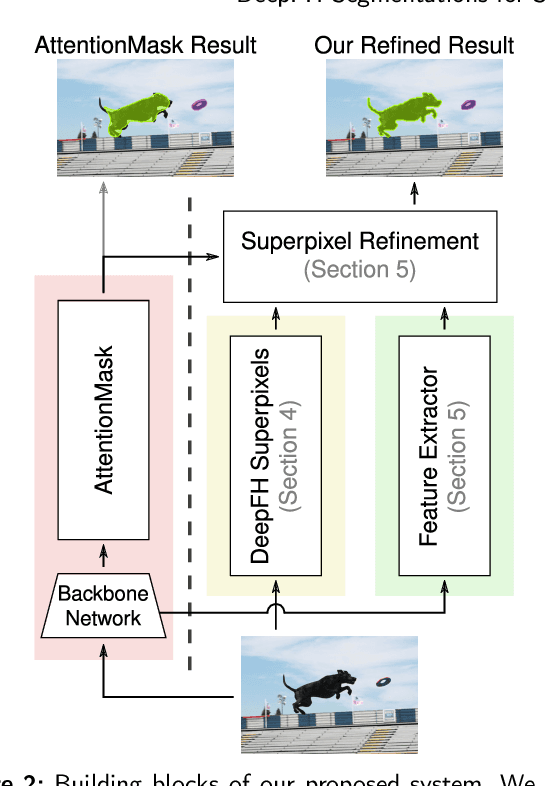

Abstract:Class-agnostic object proposal generation is an important first step in many object detection pipelines. However, object proposals of modern systems are rather inaccurate in terms of segmentation and only roughly adhere to object boundaries. Since typical refinement steps are usually not applicable to thousands of proposals, we propose a superpixel-based refinement system for object proposal generation systems. Utilizing precise superpixels and superpixel pooling on deep features, we refine initial coarse proposals in an end-to-end learned system. Furthermore, we propose a novel DeepFH segmentation, which enriches the classic Felzenszwalb and Huttenlocher (FH) segmentation with deep features leading to improved segmentation results and better object proposal refinements. On the COCO dataset with LVIS annotations, we show that our refinement based on DeepFH superpixels outperforms state-of-the-art methods and leads to more precise object proposals.
Superpixel-based Refinement for Object Proposal Generation
Jan 12, 2021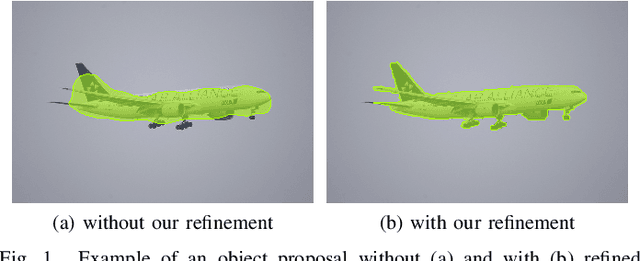
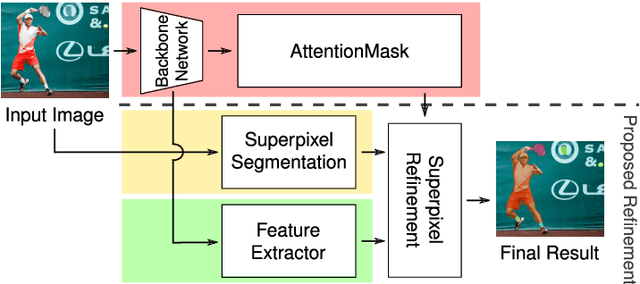
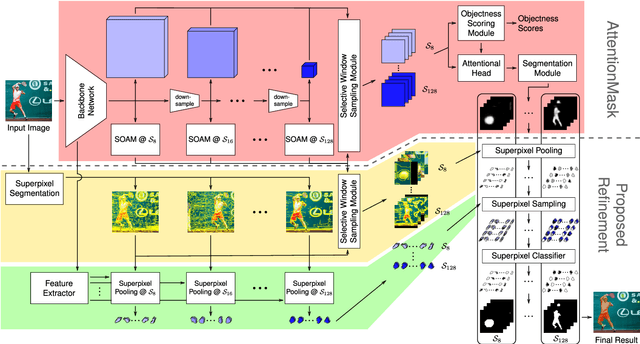

Abstract:Precise segmentation of objects is an important problem in tasks like class-agnostic object proposal generation or instance segmentation. Deep learning-based systems usually generate segmentations of objects based on coarse feature maps, due to the inherent downsampling in CNNs. This leads to segmentation boundaries not adhering well to the object boundaries in the image. To tackle this problem, we introduce a new superpixel-based refinement approach on top of the state-of-the-art object proposal system AttentionMask. The refinement utilizes superpixel pooling for feature extraction and a novel superpixel classifier to determine if a high precision superpixel belongs to an object or not. Our experiments show an improvement of up to 26.0% in terms of average recall compared to original AttentionMask. Furthermore, qualitative and quantitative analyses of the segmentations reveal significant improvements in terms of boundary adherence for the proposed refinement compared to various deep learning-based state-of-the-art object proposal generation systems.
 Add to Chrome
Add to Chrome Add to Firefox
Add to Firefox Add to Edge
Add to Edge